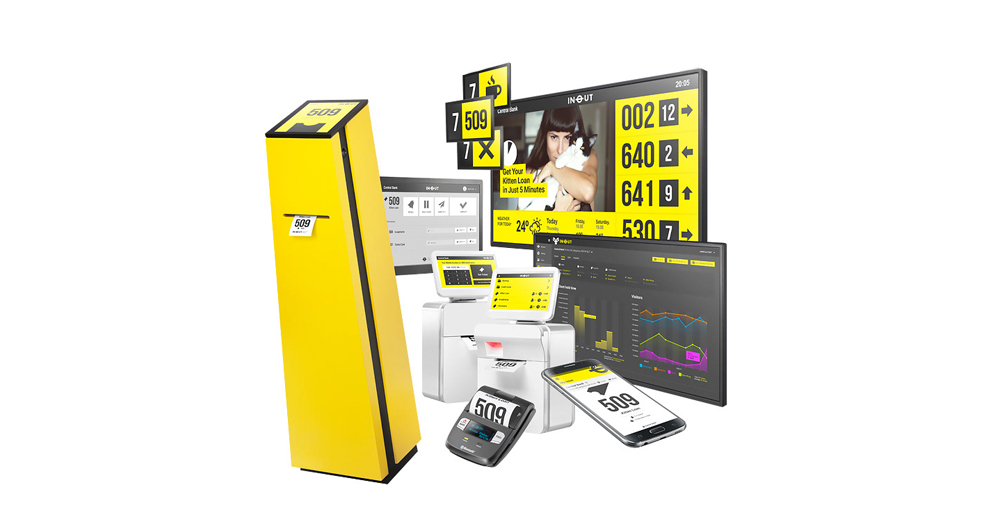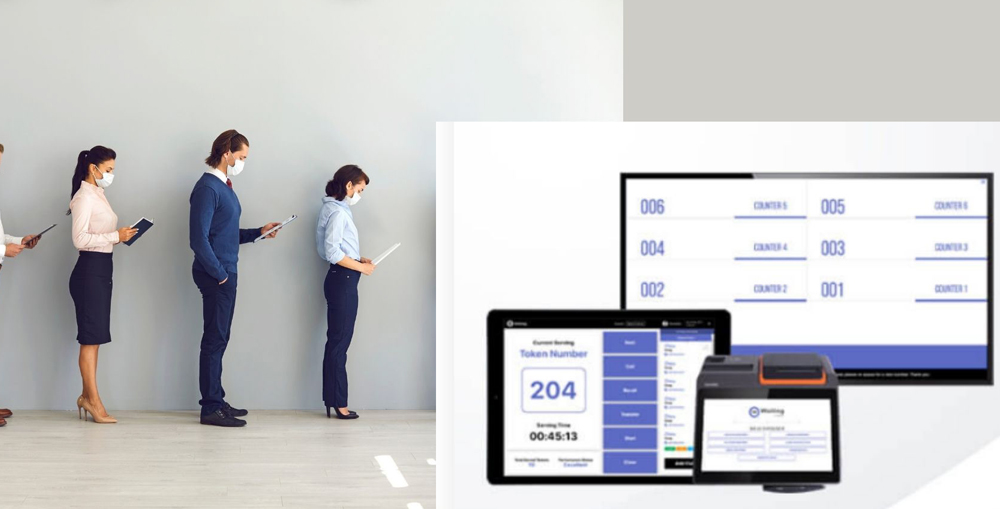Every business’s primary goal is to expand and grow. However, the business growth is completely dependent on its customers. The customers are the soul of any business, which is why the customer happiness and customer satisfaction is extremely crucial for a business. The customer satisfaction drives customer loyalty which is essential for customer retention. If a business have good customer retention, they don’t have to invest a lot in acquiring new customers. Gradually the loyal customers and an active marketing strategy can build a very strong brand identity in the market. The customer retention also have a huge impact on profitability of a business. In general it is almost 5 to 25 times more expensive to acquire a new customer comparing to selling to an existing customer. Furthermore if a business or organization keep losing customers they will have to invest more in their marketing & communication which could increase the cost of acquiring a new customer by many times. The customer satisfaction plays a crucial part in long term success and growth of a business. When it comes to customer satisfaction a few industry sectors stand out more than others for the need of a queue management system.

Here in Dubai and all around the UAE the queue management systems are a common site at several businesses, especially at banks, government offices, telecom service centers, etc. are the places we all visit once in a while. However, the queue management systems are also very popular in healthcare sector, public sector, retail, airports, educational institutions and many more. Think of yourself visiting a business to get a service, the waiting area is full, there are several counters and several queues, you have no idea in which queue you should be, you feel the adjacent queues are moving faster than yours, you are not sure how much time it will going to take and you have to be somewhere, obviously you will get confused, frustrated and at some extent angry too. This is what you are risking of putting your customers through being a manager, decision make or owner of the business. Let us admit, we all don’t like waiting, especially under those circumstance. People tend to avoid going to businesses where they had bad experience in past or where they know they will get a bad experience. That is what exactly a queue management system is designed for. It is designed to avoid all those things.

Here is what a queue management system can do for your business and your customers:
- Reduce customer wait time
- Improve customer wait experience
- Improve customer flow and customer journey
- Raise service quality and improve business processes
- Achieve customer satisfaction and gain customer loyalty
- Improve staff performance and achieve staff satisfaction
- Gather valuable business intelligence data
- Reduce cost and increase profitability
Here in Dubai, UAE good queue management system brand such as RSI Concepts also offer customization services. A customized queue management system can further boosts its efficiency and offers more benefits comparing to off-the-shelf queuing solutions.
Queue Management System: Reduces Customer Wait Time
One of the biggest reason of customer dissatisfaction is the wait time. Studies have revealed that an average customer start getting stressed after just 8 to 12 minutes of wait time, the longer the wait time will be the more stressed customer will get. More than 70 of the customers leave without making a purchase due to long wait time at the counters. Obviously different industries have different market dynamics but one thing is sure the long wait time results in customer frustration and increase churn rate too. The queue management system effectively and autonomously manages the queuing process and the customer flow in the service area. It facilitates customers by offering them multiple sign-up channels, reduce the average service delivery time, and it improves employee efficiency. Collectively all these factors and several others directly or indirectly help reducing the customer wait time.

Since the queuing and the customer flow is managed by the smart queue management system software so the employee can focus on their primary tasks without any distraction, which improve service delivery time and quality also. Furthermore there is no dispute, confusion or complaint from the customers who are waiting in queues, as everything is managed by system. The queue management system can also collect and store statistical data and has ability to route customers smartly which also reduce customer wait time and improve customer journey. It can also segregate various different types of customers such as VIP, Premium, Customer with Needs, etc. which also help improving the queuing process and reduce the customer wait time.
Improve Customer Wait Experience
Another very useful feature of a queue management system is that it can help businesses improving the customer waiting experience. If customer waiting experience can be improved they feel less impact of the waiting. The queue management system have integrated digital signage screens which are usually used for displaying the real-time queuing information. The queue management system allow businesses to play multimedia content or any other engaging material which can distract customers from the waiting and help reducing the waiting impact. Furthermore the queue management system is based on a very intelligent software engine which is powered by smart algorithms and AI (Artificial Intelligence). The queue management software can also predict the estimated time for each customer, which can be printed on their ticket and it can also be displayed on the signage screen. The impact of waiting is significantly reduced when the customer know how long they will have to wait.

Furthermore the queue management system also have audio announcement system. The audio announcements keep the users engaged and distract them from the wait time, each time when a new announcement is made, most of the customers tend to look up at the signage to see which tickets are currently being served and how far they are. These all features keep them busy and engaged and reduce the effects of the waiting and boredom. Since the entire queuing process is managed by the queue management system, and the customer also know that everything is controlled by the computer, so they usually don’t complain much. In case of manual queue management most of the time customers get confused, they also complain about line jumpers, or sometimes customers might think the staff is favoring someone over them, and so on. However, with a queue management system these all problems are gone, and on top of that the customer flow is managed by intelligent algorithms which reduce latency factors and improve overall customer waiting experience.
Improve Customer Flow and Customer Journey
The customer journey and customer flow have a huge impact on the customer journey. A queue management system have in-built modules to implement customer flow policy and allow the management to automate the customer flow throughout the entire customer journey. Usually a business offers multiple services and also have multiple counters. Mostly a single service is delivered through a single counter, however, in some cases businesses might have stepped services which require a customer to reach to several counters or more than one counter to get a full service. In some cases businesses have exclusive counters for exclusive services or customers, which also has to manage separately. There could be so many different variations and factors that can impact the customer flow and customer journey as well. A queue management system can automatically manage all these scenarios.

It means the businesses just need to configure their policy once and the queue management system is capable of taking decision in real-time based of the pre-defined settings and on the real-time system usage and statistical data. Businesses can also create agent profiles with their abilities to deliver different services and the queue management system can utilize this information to route the customers to the least busy counters while reducing the work of the busy counters which results in overall improved efficiency and performance which help improving customer flow and customer journey.
Raise Service Quality and Improve Business Processes
The businesses can utilize several advanced features to expedite the service delivery processes and service quality. Such as a queue management system have an integrated interactive kiosk for ticket dispensing, which can be used to take customer information, which help the system to prepare the agent dashboard beforehand by fetching the required information instantly from connected systems and databases. The queue management system can prepare the service agent dashboard automatically and instantly, as soon as the agent calls for the next customer the queue management system automatically fetch the data and information for the next service delivery hence saving precious time and reducing the overall service delivery time.

A queue management system can be integrated with several input devices to improve customer experience. For example, rather asking customer to input their details via sign-up form, the interactive kiosk can offer them Emirates ID scanner which can pull customer’s information automatically from the customer database and authenticate it with their ID. There are so many features that a business can add to a queue management system which can improve the customer journey and customer flow. The queue management system can automate several service delivery steps and it significantly reduces agent’s work which means the agents have more time to focus on the customer and the important things. This way a queue management system can raise service quality and improve several internal business processes.
Achieve Customer Satisfaction and Gain Customer Loyalty
Customer satisfaction and customer loyalty is a key to long term success and sustainable growth. Businesses put a huge amount of resource and revenue just to increase their loyal customer base. The loyal customers are a valuable assets who not only help businesses expand but also help them to establish a good brand image. Loyal customers tend to be a good brand advocate, they suggest their favorite brand to others and doesn’t leave the businesses for small problems and they also have more tolerance towards the negative or bad experiences. It is far more expensive to acquire a new customer than selling to an existing one. Furthermore the customer retention have huge impact on business’s profitability. For example if a business keep losing 100 customers a month while its marketing and sales team tends to acquire 200 new leads per month, their overall profitability will be reduced.

In addition to that the customers who will leave might also share their negative opinions about the business which harms its reputation and brand image. A business with less customer turnover and customer churn rate can yield more profits from the same efforts they are doing. Customer retention help promoting good brand image which attracts more customers hence it help optimizing the marketing cost as well. A queue management system significantly enhances customer experience and ensures much higher customer satisfaction. Customer satisfaction drives customer loyalty and have a very positive effect on profitability.
Improve Staff Performance and Achieve Staff Satisfaction
Since a queue management system provides a complete framework to manage the customer flow and customer journey in a fully or semi-autonomous way. It can take a huge amount of staff work and help balancing their work load. Employees who work under balanced workload tend to perform better and produce more quality work. Usually with manual queues, the staff is mostly engaged in managing queues and listening to the customers’ complaints and resolving their problems. This distract them from their primary tasks which not only have negative effect on their performance but also on the service quality. While a queue management system not only take all that burden but it also facilitates staff by managing several service delivery tasks. Furthermore the queue management system is a very capable tools of monitoring and measuring several staff KPIs. Which can be very helpful for the HR to improve the staff performance and efficiency.

A queue management system measures various KPIs and stats. For example, how many customers are being served by an individual agent or a team or a branch, etc. The queue management system can also monitor the staff activity, such as how much time they took for each service delivery, how much time they took to prepare for the next service and customer call and several other performance matrices. All this data is automatically analyzed by the in-built AI powered smart software engine and made available for the management and for the staff also. The management can easily identify the strengths and weaknesses of the staff and take steps to improve their performance. This also help HR to develop more effective employee development and training programs.

For example, if an employee is good at delivering 3 out of 5 services and for the 2 he/she take more time than the other agents, the business can help staff to improve their skills for these 2 services. There are so many features that can help employees, HR and management to evaluate employee performance and highlight their weak points which can be rectified to further improve their overall performance.
Gather Valuable Business Intelligence Data
A modern business heavily relies on the digital solutions and its IT infrastructure. In today’s world the success and growth is heavily relied upon the efficiency to effectively collect business intelligence data and leverage it to improve each and every business function and internal processes. A queue management system is a powerhouse of business intelligence data. It can collect data from each customer touchpoint. Which help businesses analyze the entire customer journey and let them track down the chock points in customer flow. The business intelligence data also help businesses to evaluate their strategies, policies, and internal business processes which can impact customer experience and customer satisfaction. The queue management system can accurately measure the time interval between every customer journey step and allow businesses to make improvements to improve customer experience.

A queue management system can accurately measure the time of the customer interaction for example how much time it take a customer from signing up till getting the service. How much time it took to deliver the service, and how much time an agent takes between completing a service, performing post-service tasks and calling for the next customer. The system can monitor staff activities as well along with their performance and several other details. It can also collect customer feedback which can be helpful for product development and it provides deeper understanding of the customer experience and their preference. The queue management system have in-built data analytical tools which can automatically generate pre-configured reports and send them to the relevant stakeholder. The managers can also perform several analysis, comparisons and set alerts if any threshold is crossed. All these features help businesses to take timely decisions and monitor everything in real-time which make them more prepared to handle unexpected scenarios without harming customer experience and customer satisfaction.
Reduce Cost and Increase Profitability
A queue management system can manage queues, sign-up processes, customer flow, customer routing and the entire customer journey. Which eliminate the need of a lot of additional staff. Acquiring a queue management system is much less expensive comparing to retaining more staff. The operational and maintenance cost of the queue management system is very low. The modern queue management systems are built on widely available technology platforms which not only reduce the initial cost but also reduce the maintenance and upgrade costs. The value a queue management system adds to the customer journey and customer experience is unmatchable to anything else. It provides better and deeper in-sight to the customer journey, customer experience, employee performance and enables businesses to learn about their customer’s preferences, market trends and help them developing customer friendly strategies and policies.

Customer satisfaction drives customer loyalty and help optimizing the cost of the marketing and acquiring new customers. A loyal clientele is a key to long term success. Selling to existing customers is far more profitable than acquiring new customers. The ability to integrate with other marketing channels and customization allow businesses to optimize the cost of their IT infrastructure. Businesses can offer much more features at a much less cost which make queue management system one of the most cost-efficient solution for the businesses. A typical lifecycle of a queue management system is 5 to 8 years, that means the business might not going to need a new solution for a long time which itself significantly increase the ROI (return over investments) of a queue management system. Furthermore the automation, employee performance improvements, and valuable business intelligence data indirectly help reducing the cost at several fronts. These all features and benefits of a queue management system help businesses generate more revenue, achieve higher productivity and performance and gain more profit.
Conclusion
A queue management system is a very useful tool to transform customer experience, customer journey and to improve several internal business processes. It help businesses closely monitor the customer behavior, the problem they face and also help them collect valuable business intelligence data. A queue management system help businesses achieve higher performance, leverage automation and increase their productivity and profitability. It help businesses gaining higher customer loyalty and let them improve their strategies and polices to make improvements. It help businesses increase staff performance while achieving higher staff satisfaction which directly impact on the service quality and service delivery processes. A business can link queue management system with several other internal and even external systems to boost the usability of the system and to bring innovative features to improve customer experience and customer journey.
RSI Concepts is a leading queue management system provider in Dubai, UAE. If you want to learn more about the subject or if you want us to help you with you queuing needs, please feel free to contact us through our Contact Us page or leave a comment in the comment box below and we will get in touch with you soon.
Check out this : How to Choose the Right Software Development Vendor for Your Business